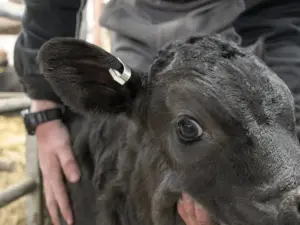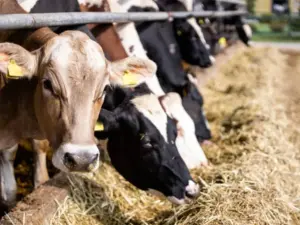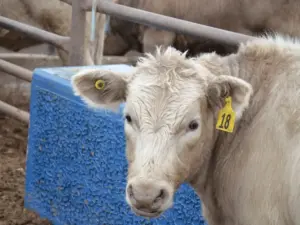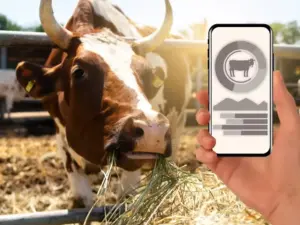Introduction:
Since ancient times, cattle ear tags have been essential in farms. The contribution of ear tagging to animal husbandry is beyond explanation. Let us learn the history behind cattle ear tags.
Once in life, you must have seen cattle wearing earrings. You can identify some numbers or codes if you have ever tried to observe them. What is it? Is this some fashion that cattle flaunt? Or something else? If you have such questions, you are in the right place. This blog will help you understand cattle ear tags. Not only the tag but also the history and importance associated with it are also important. Scroll this blog to the end to find out who made these cattle ear tags. What was their purpose, and what are their present uses? Also, read about the revolution of these cattle tag earrings over time.
What are Cattle Ear Tags?
Ear tags for cattle are small objects plugged or attached to the ears of the cattle. It is generally made of plastic or metal and helps with identification purposes. Further, cow ear tags come in different shapes, materials, and sizes. Animal husbandry units, such as farms, use them. The primary purpose of the tags is to allow easy recognition of the individual within a herd.
Understanding the History and Evolution of Ear Tags for Cattle
Now, let us jump to the history of the cattle ear tags. Cow ear tagging traces its origin from the livestock earrings. More or less, cattle and livestock carry the same meaning. The only difference is that the latter includes a wider variety. At the same time, the former is a variety of livestock.
Development and Design of the Cattle Ear Tags

For the first time, livestock ear tags were developed for merino sheep. Later, their uses extended to different animals, including cattle. Early evidence reflects that their use was limited to royal families only. Presently, you can find them even on common farms. Sir Joseph Banks directed the invention and process. Matthew Boulton also contributed to the design of the ear tags. The late 1900s mark the introduction of the first cattle ear tags. Earlier, the cow ear tags were made with simple metal, like tin or plastic markers. These tags were easy and quick to use. The entire process was quite simple. Farmers can engrave a unique code and attach the tags to the ears of their cattle. In this way, they unlocked a durable yet quick means of identification.
How have Ear Tags Gained Popularity?

Later, in 1895, the United States started using ear tags for breed identification. The step was collaborated with the International Ohio Improved Chester Association. Afterward, Canada started ear tagging cattle in 1913. The measure was adopted to identify and manage cattle during tuberculosis testing. The BSE outbreak was responsible for the widespread use of cattle ear tagging. And that’s the start of employing ear tags on a large scale.
Post-World War II Advancements in Cow Ear Tags

After receiving a warm public welcome, cow ear tags underwent significant modifications. Post-World War II, the US started employing larger ear tags carrying country flags. By 1945, steel with nickel plating became the dominant material for ear tags. In 1949, the National Band & Tag Company introduced the innovative Style 49 ear tag for cattle. Studies suggest that Style 49 ear tags were made up of steel. A significant breakthrough came in 1953. The year marks the invention and patent of the first two-piece ear tag.
Moreover, made up of plastic, the design comes with a self-piercing feature. That’s what made it more popular. After that, in 1956, the National Band & Tag created Style 56, an ear tag for cattle.
The Present Electronic Age of Cattle Tags

After Style 56, cattle ear tags underwent another revolution. The 1970s marked the introduction of electronic tags, also known as RFID. RFID expands to (Radio Frequency Identification) tags. These ear tags are better and add another level of sophistication. Unlike traditional tags, they can store extra data beyond identification numbers. For consideration, the farmers can also check on temperature readings. They can track movements, watch health, and effectively manage breeding programs.
Further, they can use the inference to identify when the cattle are sick or injured. EID tags offered a quantum leap in efficiency and accuracy. The electronic revolution in cattle ear tags has enhanced the welfare of livestock and empowered farmers with valuable insights for optimizing their operations. They are often used in conjunction. Farmers pair them with visual tags for easier on-sight identification.
Challenges Associated With Electronic Tags
Despite their widespread adoption, cattle ear tags have not been without controversy. Critics argue that the use of RFID tags raises privacy concerns. The issue is raised as anyone can exploit the data collected. Further, there have been debates about the long-term effects of electronic tagging. Ear tagging cows and other animals might impact their behavior and well-being. Also, the maintenance of ear tagging cattle is expensive. Thus, it is another barrier for small-scale farmers.
Present and the Future of Cow Ear Tags
Earlier, the adoption of cattle ear tags was not only a matter of convenience. But today, it is also a response to evolving regulatory standards. Governments recognize the importance of ensuring the safety and quality of livestock products. For instance, the EU’s Cattle Passport Scheme in the late 1990s. The scheme mandated the use of electronic ear tags for all bovines.
Similarly, different countries have implemented mandatory identification and tracking systems. This boosts the production and market of ear tags on a global scale. Currently, there are some challenges associated with the cattle ear tags. It is important to address these concerns and find solutions. With advanced technology, science needs to balance innovation with ethical and economic considerations.
In conclusion, cattle ear tags are the need of the hour. Governments and scientific councils must make essential efforts to move in this direction. This world deserves to be a safe place for everyone, including cattle.
